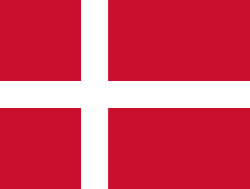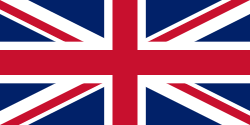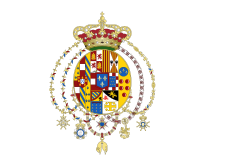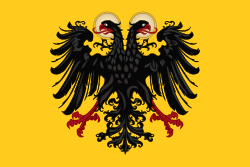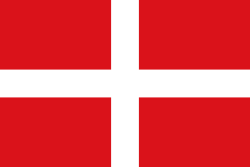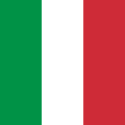Válka druhé koalice
| Válka druhé koalice | |||
|---|---|---|---|
| konflikt: Francouzské revoluční války | |||
 Bitva u Marenga | |||
| Trvání | 29. listopad 1798–25. březen 1802 | ||
| Místo | Evropa, Blízký východ, Středozemní moře, Karibské moře | ||
| Výsledek | vítězství Francie, Mír v Lunéville
| ||
| Změny území |
| ||
| Strany | |||
| |||
| Velitelé | |||
| Ztráty | |||
| Některá data mohou pocházet z datové položky. | |||
Válka druhé koalice (1798–1802) byla druhou válkou revoluční Francie proti evropským monarchiím, vedenými Velkou Británií, habsburskou monarchií a Ruskem. Cílem druhé koalice bylo zastavit rozpínání revoluční Francie a obnovit monarchii. Druhá koalice byla ve válce poražena.

Odkazy
Reference
V tomto článku byl použit překlad textu z článku War of the Second Coalition na anglické Wikipedii.
Externí odkazy
 Obrázky, zvuky či videa k tématu válka druhé koalice na Wikimedia Commons
Obrázky, zvuky či videa k tématu válka druhé koalice na Wikimedia Commons
Média použitá na této stránce
Autor: Sodacan, Licence: CC BY-SA 3.0
Královská standarda francouzského krále (používaný jako státní vlajka Francouzským královstvím v období absolutní monarchie). Používaná byla v letech 1638 až 1790.
Autor:
Flag of Poland (Duchy of Warsaw), used from 1807 to 1815.
Flag Portugal (1750)
Strategic Situation of Europe, 1798
Autor: David Liuzzo, eagle by N3MO (re-uploaded by Dragovit), Licence: CC BY-SA 3.0
Banner of the Holy Roman Empire, double headed eagle without haloes (1400-1806)
Flag of Genoa
Autor: previous version User:Ignaciogavira ; current version HansenBCN, designs from SanchoPanzaXXI, Licence: CC BY-SA 3.0
Flag of Spain (1785-1873 and 1875-1931)
Při zobrazení tohoto souboru lze snadno přidat orámování
Autor: David Liuzzo, eagle by N3MO, Licence: CC BY-SA 3.0
Banner of the Holy Roman Empire, double headed eagle with halos (1400-1806)
Flag of the Parthenopaean Republic (1799) and of the united Romanian people (by Petre Vasiliu-Năsturel, 1866). Vectorization of the original by User:Panairjdde of March 2005.
Digital reproduction of the Star Spangled Banner Flag, the 15-star and 15-stripe U.S. garrison flag which flew over Fort McHenry following the Battle of Baltimore in the War of 1812. Seeing the flag during the battle, and again the following morning, inspired Francis Scott Key's song The Star-Spangled Banner, now the U.S. national anthem. During the battle a smaller "storm flag" was flown; it was replaced by this larger flag early the next morning, which is the flag Key saw then. This larger flag is now displayed at the National Museum of American History in Washington, D.C. For several decades it remained in the family of Fort McHenry's commanding officer, before being given to the Smithsonian in 1912. The family cut pieces out of the flag from time to time as gifts.
The original flag was 42 feet long and 30 feet high, with each stripe being about two feet, and the stars being about two feet in diameter. It was made by Mary Young Pickersgill and her assistants. More info on the original dimensions here. The stars seem to mostly point to the side, except for one (the bottom right) which points down. One star has been cut out of the actual flag, so I'm guessing that originally pointed to the side as well (Fort McHenry flies a flag (File:Ft mchenry 15starflag.jpg) with a similar star pattern, but it looks like they are all to the side, and the other dimensions look similar to a modern flag). I guesstimated other dimensions and star positions based on File:Star-Spangled-Banner-1908-1919.jpg; the union (blue area) looks to be about 19 feet wide. The star rows look to be evenly distributed; i.e. the distance between the top/bottom edges and the center of a star row looks to be about the same as the distance between two (centers of) rows. Not so left-to-right; they are pretty close to the right edge and even closer to the hoist side. Also available here, page 12.National flag of the Batavian Republic, as decreed by the States General on February 14, 1796.
The pre-1801 Union Flag (of w:United Kingdom of Great Britain).
Autor: Blackcat, Licence: CC0
Flag of the Cisrhenian Republic (1797–1802)
A nautical flag of Mamluk Egypt (claimed as being from a 19th-century source). This is doubtful. Flaggen aller seefahrenden Nationen as originally published c. 1750/60 does not show such a flag.[1] It is also intended as showing flags in then-current use. Mamluk rule in Egypt ended in 1517. There is no "Mamluk" flag in the 1700s edition of Flaggen aller seefahrenden Nationen.
Autor: User: David Newton, Licence: CC BY-SA 3.0
Swedish war flag and naval ensign
Adoption: Dates back to the mid-1600s. Described in law on November 6, 1663. Current design: June 22, 1906
Autor: Tibetan Pop Rocks, Licence: CC BY-SA 3.0
Merchant flag of the Papal States. In use since 1803, officially adopted on 7 June 1815.
The Ottoman flag and Turkey Republic Flag of 1844–1935. Late Ottoman flag which was made based on the historical documents listed in the Source section. Note that a five-pointed star was rarely used in the crescent-and-star symbol before the 19th century.
Při zobrazení tohoto souboru lze snadno přidat orámování
State Flag of the Savoyard States (late 16th - late 18th century).
Autor: PavelD, Licence: CC BY-SA 3.0
Flag of the Cisalpine Republic

